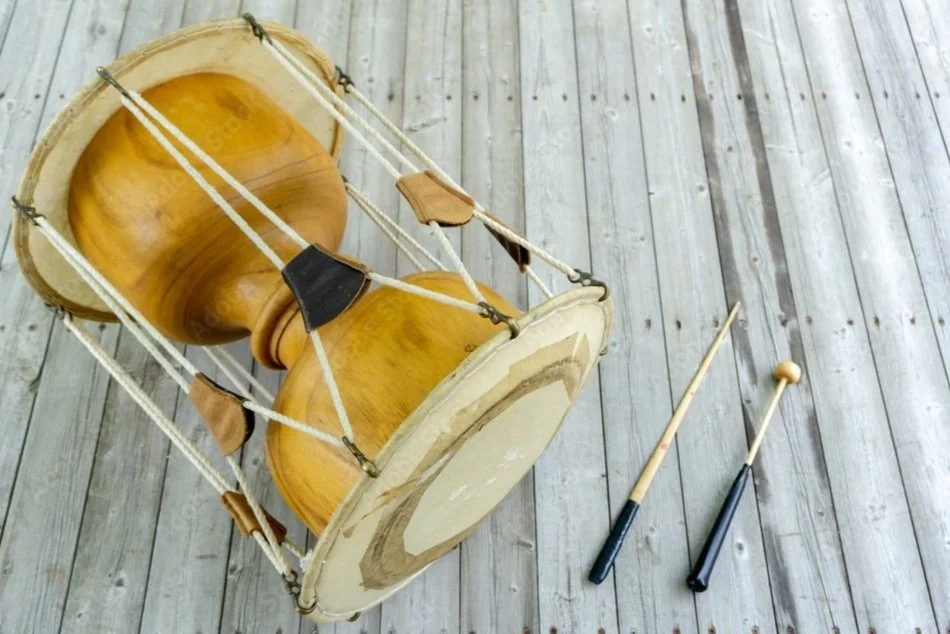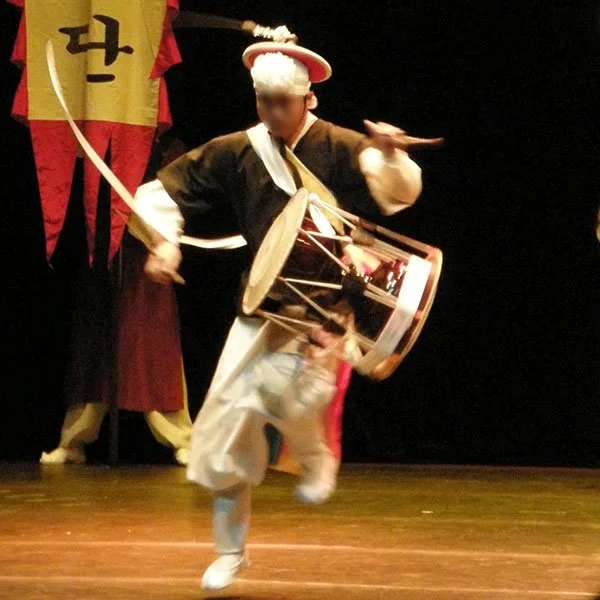The Art of Korean Drumming
Korean culture can be appreciated through different senses, like taste, smell, and sight, but one of the most important is through sound. Korean music is an integral part of the culture, with its distinct style creating a unique music culture. Essential to music is its rhythm, which is what Korean drums are for. Here is a guide to Korean drums with its rich history, components, and characteristics.
Janggu
The Janggu drum is one of the most used drums in Korean music, and many believe it portrays the sound of rain. Commonly nicknamed the double headed Korean hourglass drum, it strongly resembles a large hourglass as the width tightens around the center. The body of the drum is hand-carved from a royal foxglove tree and left for a couple years to ripen to the ideal wood state. Hide is then sewn onto both sides of the drum, and a type of rope is strung across it. Pieces of leather are then placed on the strings to tighten them, which changes the tones of the drums, making one a higher pitch and one a lower pitch.
Traditional Janggu drum
Origin
The Janggu drum was first seen during the Silla era from 57 BC to 935 AD, but it grew popular during King Munjong’s reign in the Goryeo Dynasty (918-1392), which you can learn more about in our previous blog post!
How to Play
The Janggu can be played by sitting on the ground with the drum in front, or it can be worn on the shoulder with a strap, which makes the drum sit diagonally across the chest. Both positions should allow both hands to be free (unlike the sogo that only has one free hand to hit the drumhead). The right hand will hold a yeolchae stick, which allows for a higher and sharper sound. The stick moves right and left to hit the head of the drum and stay flush against it instead of rebounding. The left hand holds the gungchae mallet, which is played by hitting the center of the drum from a perpendicular angle and rebounding, allowing for a deep and low bass sound. The yeolchae will always hit the right side of the drum, but the gungchae often hits both sides, allowing for more dimension and variety of tones.
A drummer playing the Janggu drum
Fun Fact
Our KAYAT Ambassadors have been learning how to play the Janggu drum, and we are excited to share our performance with you all soon!
Buk
Buk refers to a large and shallow barrel-shaped drum. Like the others, both sides are covered in animal hide as the drum heads. Its large shape allows the sound to resonate and give off a deeper bass sound. Although related to the Janggu drum, the Buk drum is known to have beautiful and ornate paintings on the wood body of the drum that typically include dragons.
Traditional Buk drum
Traditional Buk drum with ornate dragon painting on the body
Origin
The Buk drum was originally used for jeongak, or Korean court music, and for folk music. Like the Janggu drum, the buk drum first appeared in the Silla era.
How to Play
Typically, the left hand will be free to strike the left side of the drum, and the right will hold a stick that hits the right head and the wooden body of the drum. The stick is called a bukchae, which directly translates to “drumstick.”
Sogo
Sogo translates to “small drum” and is traditionally composed of two animal hides laced together around a wooden cylindrical shell. A wooden handle is attached to the shell, allowing it to be held with one hand. The other hand holds a wooden beater that is used to hit either side of the drum.
Traditional Sogo drum
Origin
Although the exact date of the Sogo drum’s creation remains unknown, it is believed to have originated a few centuries ago in agrarian communities to be used in folk songs.
Sam-Taeguk
Both heads of the sogo drum typically have the Sam-Taeguk symbol painted on them. The symbol follows the influence of the Chinese Yin-Yang, but has three colors—blue, red, and yellow—that are swirled together in a circle. Each color has a different meaning. Blue represents heaven, red represents earth, and yellow represents humanity. The three colors together symbolize the harmony and peace between them, and remains a popular Korean symbol.
Sam-Taeguk symbol
How to Play
The Sogo drum is typically held in the left (or non-dominant) hand, and the beater is held in the right (or dominant) hand. The beater should optimally hit the center of the drum, which is where the Sam-Taeguk is. Either side of the drum can be hit, with the drummer often flipping the drum in their hand to add flair to the performance. When playing the Sogo, it is common to add moves to the performance, which include spinning around, lifting the drum and beater into the air, and much more.
Fun Fact
The K-pop group, SEVENTEEN, brought much popularity to the sogo drum and started selling their own customized sogo drums as merchandise!
SEVENTEEN’s Sogo drums
A Final Word
Although these are only a few of the dozens of Korean drums, we hope this offers you a glimpse into the beautiful world of Korean music and drumming. From the attention to detail in assembling the drums to the mastery of playing them, Korean drums are truly a work of art.
Informational Sources:
https://omeka-s.grinnell.edu/s/MusicalInstruments/item/931
http://www.san-shin.org/Sam-Taegeuk.html
https://artsphere.org/changgo-drum/








